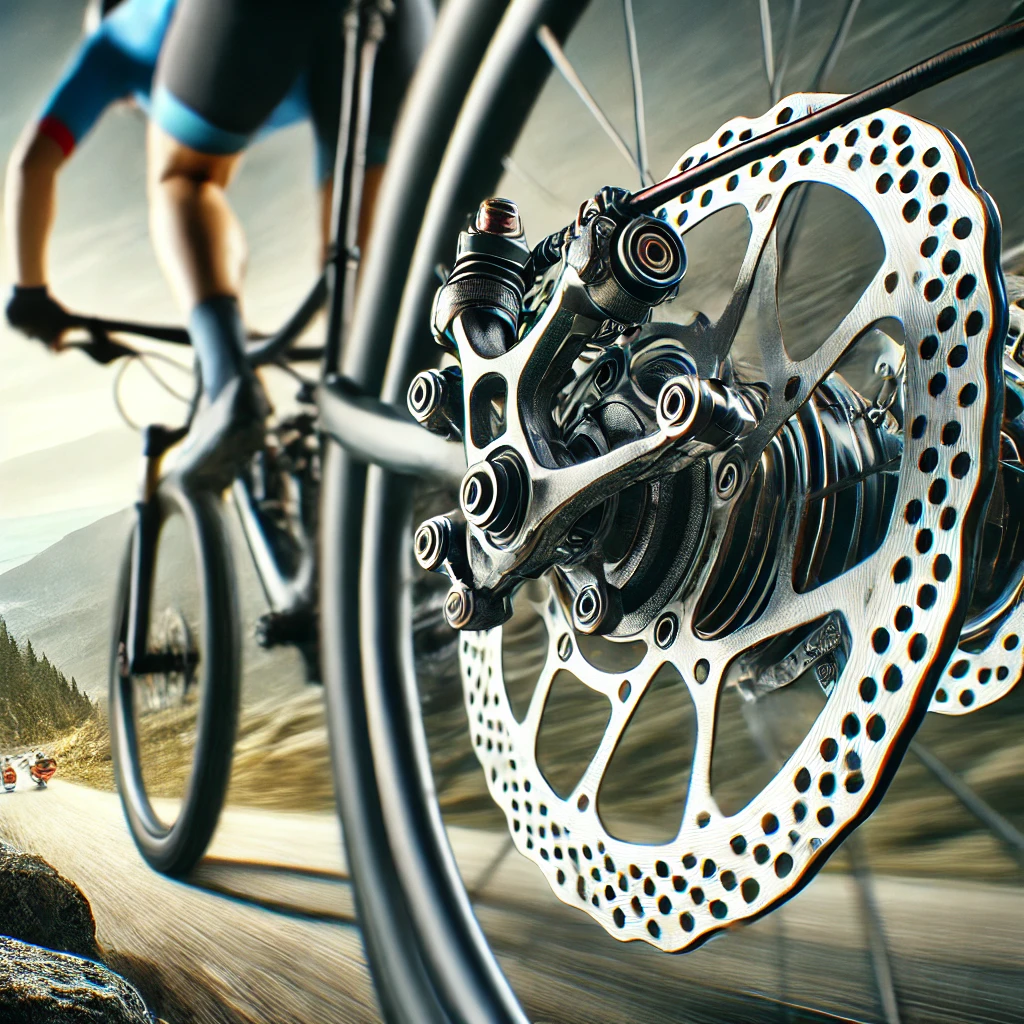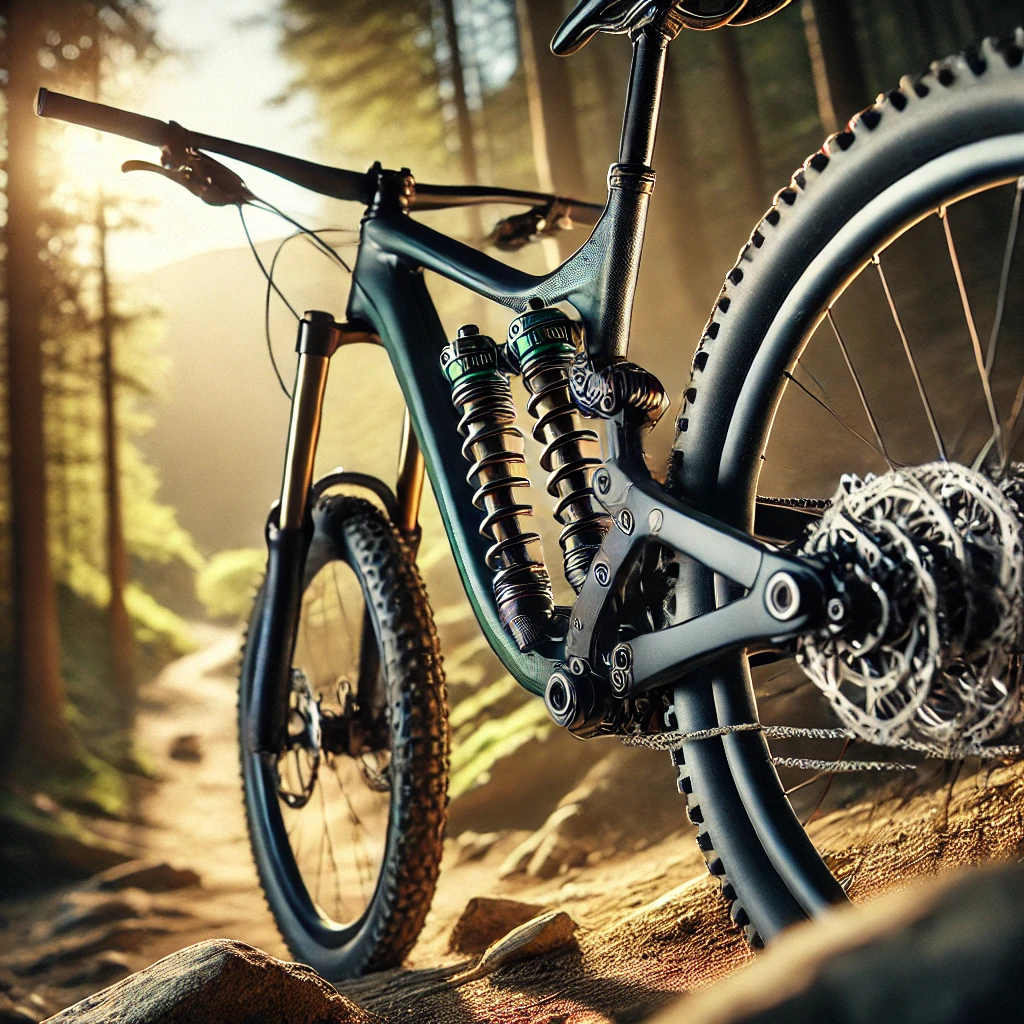When it comes to cycling, your ability to stop safely and effectively is just as important as your ability to go. Disc brakes are becoming the standard for modern bicycles, offering superior stopping power, especially in challenging conditions like wet or muddy weather. Whether you’re an avid road cyclist, mountain biker, or just someone who enjoys weekend rides, understanding the importance and functionality of disc brakes is essential. This comprehensive guide will explore everything you need to know about disc brakes, how they work, their benefits, and how to choose the right system for your bike.
What Are Disc Brakes?
Disc brakes are a type of braking system that uses a disc rotor to create friction with the brake pads in order to slow down or stop the wheel. Unlike traditional rim brakes, which press the brake pads directly against the wheel rim, disc brakes operate by clamping onto a rotor attached to the wheel hub, generating stopping power through friction.
Key Components of Disc Brakes:
- Rotor: A metal disc attached to the wheel hub, which rotates with the wheel.
- Brake Pads: These are the components that make contact with the rotor to create friction.
- Caliper: The mechanism that holds the brake pads and applies pressure to the rotor.
- Hydraulic or Mechanical System: The method used to activate the caliper—hydraulic systems use fluid, while mechanical systems use a cable.
How Disc Brakes Work:
When you pull the brake lever on your handlebars, either a hydraulic piston or a cable pulls the caliper, which presses the brake pads against the rotor. This creates friction, which slows the wheel down, ultimately bringing you to a stop.
Benefits of Disc Brakes
1. Superior Stopping Power
One of the primary reasons cyclists opt for disc brakes is the superior stopping power they provide. The design of disc brakes allows for greater force to be applied, meaning you can stop more quickly and effectively, especially when riding at high speeds or in difficult conditions.
- Increased Control: Disc brakes give cyclists better control during emergency stops or when navigating steep descents.
- Performance in Wet Conditions: Unlike rim brakes, disc brakes perform much better in wet and muddy conditions because the braking surface (the rotor) is not affected by water or debris.
2. Consistency in All Conditions
The performance of rim brakes can deteriorate in wet or muddy conditions because water can reduce friction between the brake pads and the rim. Disc brakes provide consistent braking power, regardless of weather conditions.
- Improved Performance in Rain: Even when it’s wet or muddy, disc brakes maintain their stopping power because they are mounted away from the wheel rim, where water and mud can accumulate.
- Reduced Brake Fade: Heat buildup can cause brake fade in rim brakes, where the braking performance decreases over time. Disc brakes, especially hydraulic systems, are more resistant to this issue.
3. Less Wear on Wheels
Because disc brakes work by applying pressure to a rotor instead of the wheel rim, they help reduce wear on your wheels. This can significantly extend the lifespan of your bike’s rims, saving you money on replacement parts.
- Longer Rim Life: Since the braking force is applied to the rotor rather than the wheel rim, your wheels are less likely to become damaged or worn out.
4. Better Heat Dissipation
The design of disc brakes allows for better heat dissipation during braking, which helps maintain consistent braking performance. When braking, friction generates heat, and excessive heat can cause the brake pads to lose effectiveness (known as brake fade). The rotor’s ventilation system in disc brakes helps dissipate heat quickly, preventing brake fade and improving overall performance.
5. Improved Durability
Disc brakes are more durable than rim brakes because they are less affected by environmental factors such as dirt, water, and mud. This makes them an ideal choice for mountain biking and off-road cycling, where rough conditions can take a toll on your equipment.
- Longer Lifespan: The rotor and caliper systems are designed to last longer than traditional rim brake systems, which experience more wear over time.
Types of Disc Brakes
1. Mechanical Disc Brakes
Mechanical disc brakes use a cable system to activate the brake pads. When you pull the brake lever, the cable pulls the brake caliper, causing the pads to contact the rotor.
- Pros: Mechanical disc brakes are easier to maintain and cost less than hydraulic systems.
- Cons: They require more effort to operate and may not offer the same stopping power as hydraulic systems.
2. Hydraulic Disc Brakes
Hydraulic disc brakes use fluid to transfer force from the brake lever to the caliper. This results in smoother and more efficient braking, with less effort needed to apply the brakes.
- Pros: Hydraulic disc brakes provide superior stopping power and require less maintenance than mechanical brakes.
- Cons: They are more expensive and require special tools for maintenance.
How to Choose the Right Disc Brakes
Choosing the right disc brakes for your bike depends on several factors, including your riding style, budget, and bike type. Here’s a quick guide to help you decide:
1. Riding Style
Your riding style plays a significant role in choosing the correct braking system.
- Road Cyclists: If you mostly ride on the road, a mechanical disc brake system might be sufficient, as it provides good stopping power with less maintenance.
- Mountain Bikers: For off-road conditions, hydraulic disc brakes are recommended due to their superior stopping power, especially on steep and technical trails.
2. Budget
Mechanical disc brakes are more affordable, while hydraulic disc brakes tend to be more expensive due to their superior performance and technology. If you’re on a budget but still want the benefits of disc brakes, mechanical systems may be the way to go.
3. Compatibility
Ensure that the disc brake system is compatible with your bike’s frame and wheel setup. Some bikes come pre-equipped with mounts for disc brakes, while others may require special adapters.
- Check Brake Mounts: Your bike must have the appropriate mounting points for disc brakes (such as IS mounts or post mounts).
- Rotor Size: Larger rotors provide more stopping power, but ensure that your bike frame and fork can accommodate the size of rotor you want.
Maintenance Tips for Disc Brakes
Proper maintenance is crucial to ensure that your disc brakes perform optimally throughout their lifespan. Here are a few tips to keep your disc brakes in top shape:
1. Regularly Check Brake Pads
Inspect your brake pads regularly to check for wear. Worn brake pads can reduce braking efficiency, so it’s important to replace them as needed.
- Check for Wear Indicators: Many disc brake pads come with wear indicators that will help you determine when it’s time to replace them.
2. Keep Rotors Clean
Dirt and debris can build up on the rotor, affecting braking performance. Clean the rotors regularly using a soft cloth and rubbing alcohol to ensure smooth operation.
- Avoid Oil and Grease: Make sure that the rotors do not come into contact with oils, greases, or other lubricants, as they can drastically reduce braking performance.
3. Adjust Brake Calipers
Ensure that the brake calipers are properly aligned with the rotor. Misaligned calipers can cause uneven wear on the brake pads and rotor, reducing stopping power.
- Check Alignment: Adjust the caliper if necessary, ensuring that the pads are evenly spaced on both sides of the rotor.
4. Bleed Hydraulic Brakes
For hydraulic disc brakes, it’s essential to periodically bleed the brake lines to remove any air and ensure smooth braking. This helps maintain the responsiveness of the brake system.
Where to Buy Quality Disc Brakes
If you’re looking for top-quality disc brakes for your bike, Athlete Solution offers a wide selection of high-performance disc brake systems designed for cyclists of all levels. Whether you need a simple mechanical system or the advanced performance of hydraulic brakes, you can find the perfect match for your bike.
Check out the full collection of disc brakes at Athlete Solution.
For more general information on disc brakes, check out the Wikipedia page on Disc Brakes.
Conclusion
Disc brakes are a must-have for cyclists looking to improve their stopping power and overall riding experience. Whether you’re riding on the road, tackling off-road trails, or simply need reliable brakes for city commuting, disc brakes provide superior performance, consistency, and durability. By choosing the right system for your bike, you can ensure that you’re always in control, no matter the conditions.
For more cycling gear and tips, visit Online Pharma.


